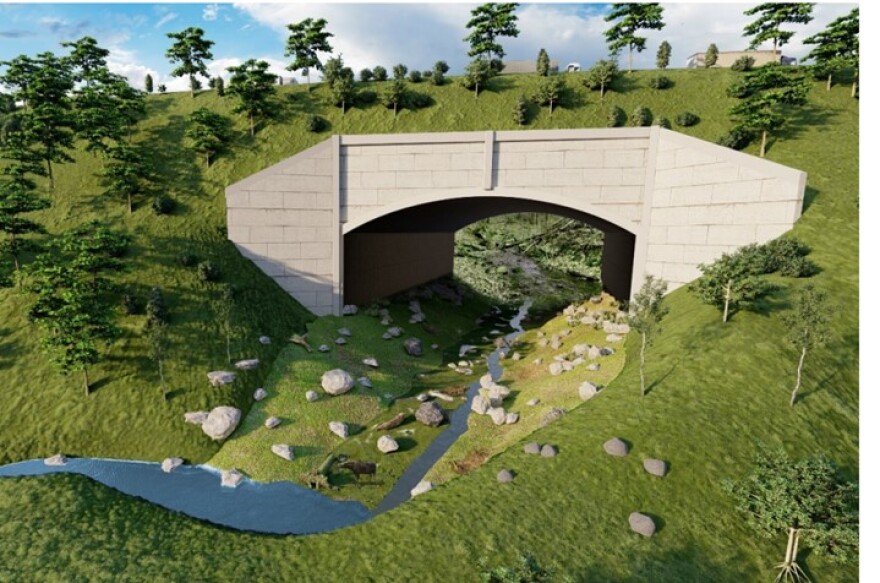A metal culvert runs underneath Interstate 89 and Route 2 in Waterbury, connecting a tributary of the Winooski with the main river channel. It’s five feet wide, about 400 feet long, and definitively too small.
“During rain events, water backs up on the upstream side and shoots out the culvert like a fire hose,” said Chris Slesar, an environmental resource coordinator with the Vermont Agency of Transportation.
The roads here are also a barrier to most wildlife. Fish can’t migrate upstream, and animals tend to avoid long, narrow culverts like this. For some species, the highways have effectively created a wall that runs through the forest.
“Like in our bear population, we see there are distinct subpopulations north and south of the highway,” said Jens Hilke, a biologist with the Vermont Fish & Wildlife Department.
The state wants to replace the culvert in Waterbury with an underpass for wildlife, so animals like bobcats, moose and turtles could easily avoid the road. Last week, the Federal Highway Administration granted the state over $1.6 million to cover design costs for the project.
“It’s not possible to overstate the importance of this site for wildlife movement,” said Slesar. “This is the holy grail of wildlife crossings in Vermont.”
Vermont Agency of Transportation
The site is significant because of where it lies, along the spine of the Green Mountains between a forest that’s nearly 80,000 acres to the north, and one that’s over 50,000 acres to the south.
Hilke also sees the project as part of helping species adapt to climate change: “[With] climate change, we’re shuffling around the locations of species. That’s happened since the glacial era, that’s nothing new, but it’s certainly happening faster now.”
The design phase of the project will take about a year, according to Slesar. Then, the state still needs to come up with funding to build the crossing itself, which will require costly excavation work.
The state is hoping to apply for another federal grant — part of a pilot project to reduce collisions between cars and animals, and connect habitat.
Federal money for these projects is already running low. But Slesar says the state wants to see the project through, one way or another.
“The agency is committed to this project.”
Have questions, comments or tips? Send us a message, or contact reporter Lexi Krupp.
Lexi Krupp is a corps member with Report for America, a nonprofit national service program that places journalists in local newsrooms to report on under-covered issues and regions.
